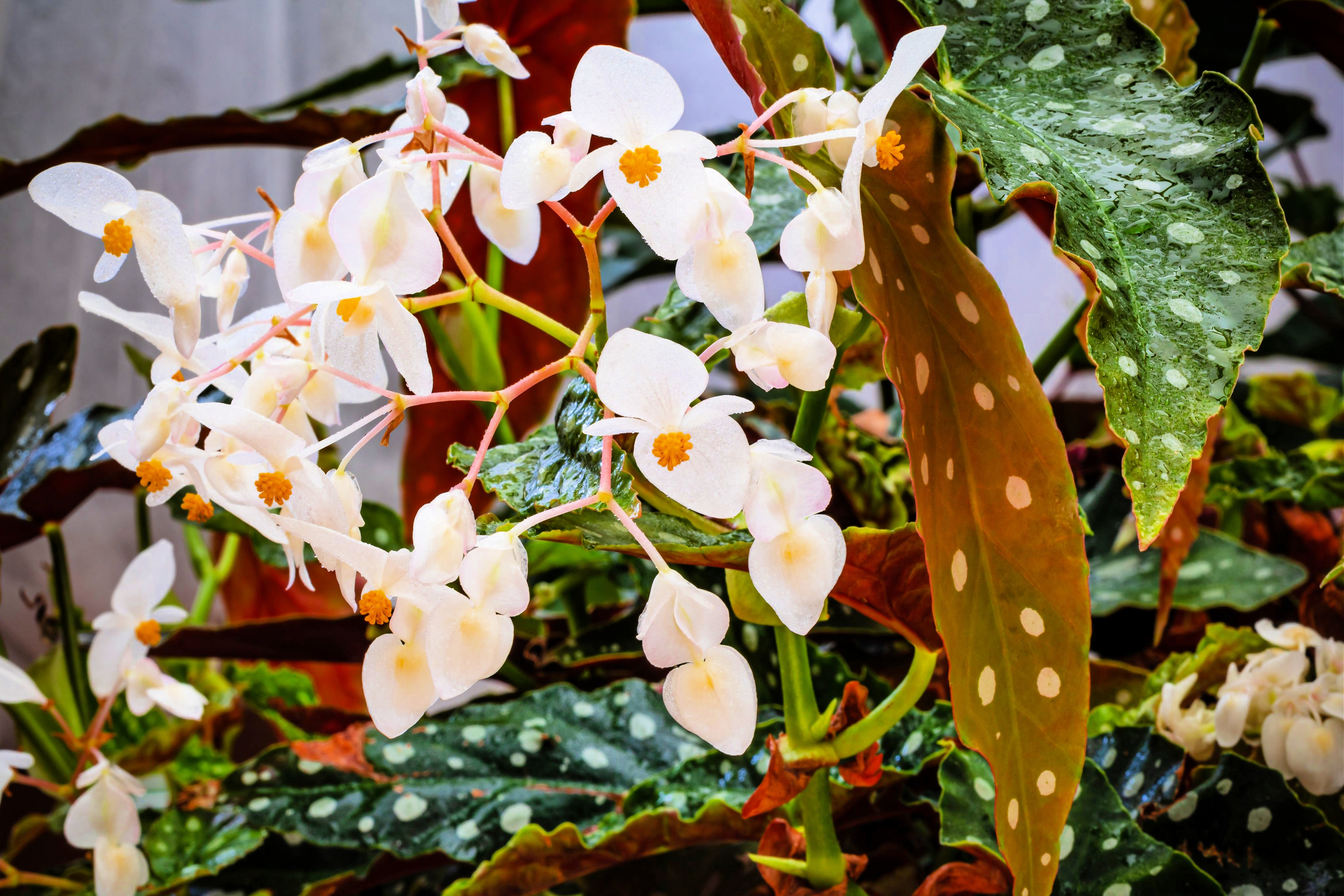Polka dot begonia
(Begonia maculata)

Description
Begonia maculata, also known as polka dot begonia or angel wing begonia, is a species of flowering plant in the family Begoniaceae. It is native to Brazil, where it grows in humid forests and on rocky outcrops. This plant has become increasingly popular among indoor plant enthusiasts due to its striking foliage and relatively easy care requirements. In this encyclopedia guide, we will explore everything you need to know about Begonia maculata, from its appearance and care needs to its cultural significance and history. Appearance: Begonia maculata is a perennial plant that can grow up to 1.5 meters tall when grown outdoors. When grown indoors, it typically stays around 60-90 cm tall. The plant has cane-like stems that are often a reddish-brown color and are covered in small white dots. The leaves of the plant are its most striking feature, with obliquely ovate leaves that are asymmetrical, long, and pointed. The leaves are typically dark green with silver-white polka dots, which contrast beautifully against the dark background. The plant produces small pink or white flowers on long, slender stems that extend from the axils of the leaves. The flowers are not as showy as the foliage and are often removed to allow the plant to focus on growth and leaf production. Care Requirements: Begonia maculata is a relatively easy plant to care for, making it an excellent choice for beginner indoor gardeners. Here are some care tips to ensure your plant thrives: Light: Begonia maculata prefers bright, indirect light. It can tolerate some direct sunlight in the morning or evening, but direct sunlight during the hottest part of the day can damage the leaves. Watering: The plant prefers consistently moist soil, but it does not like to sit in water. Water your Begonia maculata when the top inch of soil feels dry to the touch. Water thoroughly and allow excess water to drain away. Humidity: Begonia maculata prefers high humidity, which can be difficult to achieve in dry indoor environments. You can increase humidity by misting the plant regularly, placing a humidifier nearby, or placing a tray of water and pebbles beneath the plant. Soil: The plant prefers well-draining soil that is rich in organic matter. A peat-based soil mix with added perlite or vermiculite works well. Fertilizer: Begonia maculata benefits from regular fertilization during the growing season (spring and summer). Use a balanced fertilizer every two to four weeks to promote healthy growth. Cultural Significance and History: Begonia maculata has been a popular houseplant since the Victorian era, when indoor gardening became a fashionable hobby among the wealthy. The plant's striking foliage and relative ease of care made it a popular choice among indoor gardeners, and it has remained a popular plant to this day. In Brazil, where the plant is native, it is used in traditional medicine to treat a variety of ailments, including respiratory infections, digestive issues, and skin conditions. The plant is also used in some cultures as a symbol of good luck or prosperity. In recent years, Begonia maculata has become a popular subject among plant enthusiasts on social media platforms like Instagram, where its striking appearance and photogenic qualities have earned it a significant following. Conclusion: Begonia maculata is a striking and relatively easy-to-care-for plant that has become increasingly popular among indoor gardeners in recent years. With its dark green leaves and silver-white polka dots, the plant adds a touch of elegance and sophistication to any indoor space.
Taxonomic tree:







